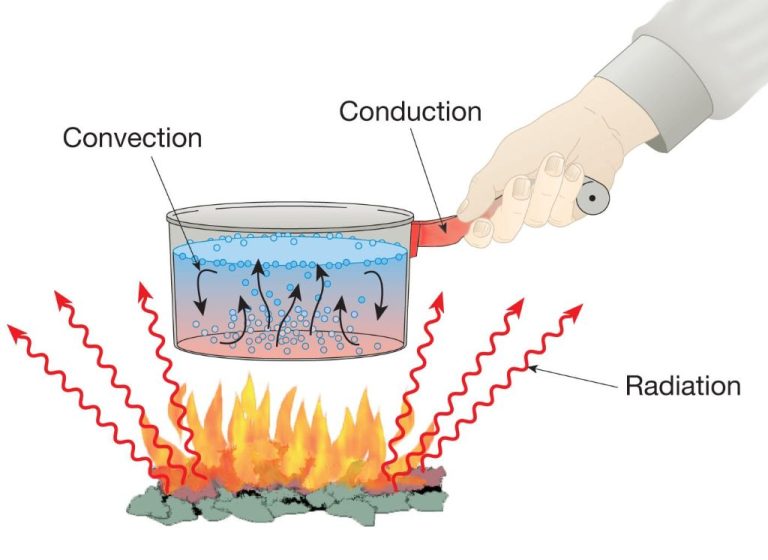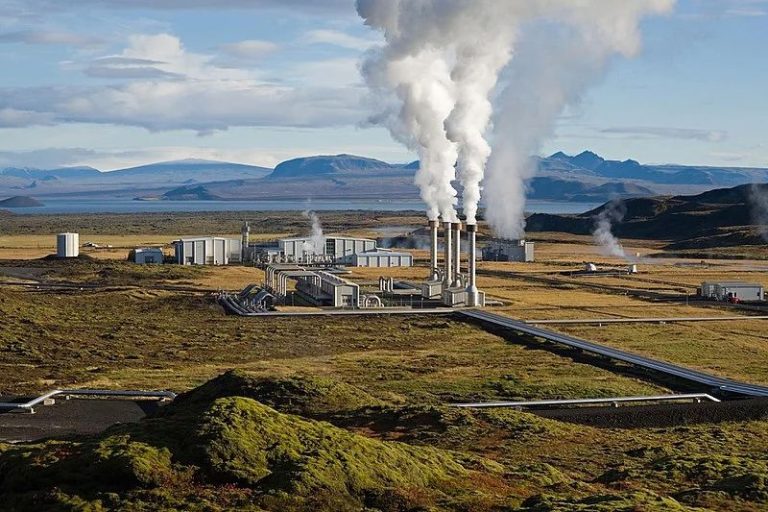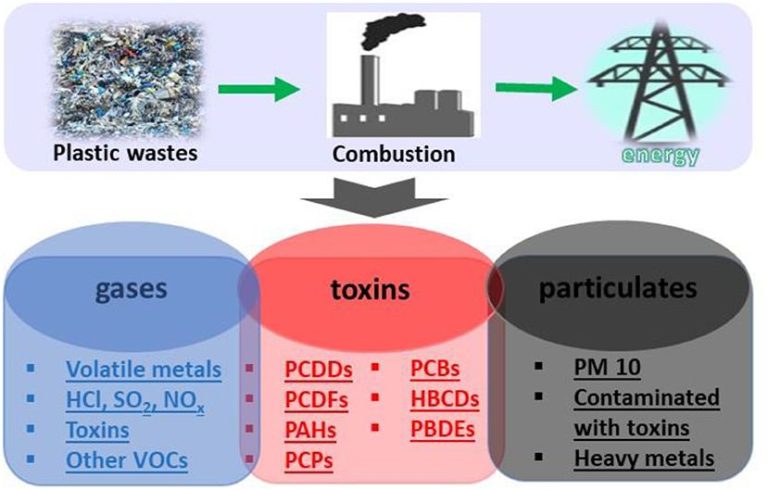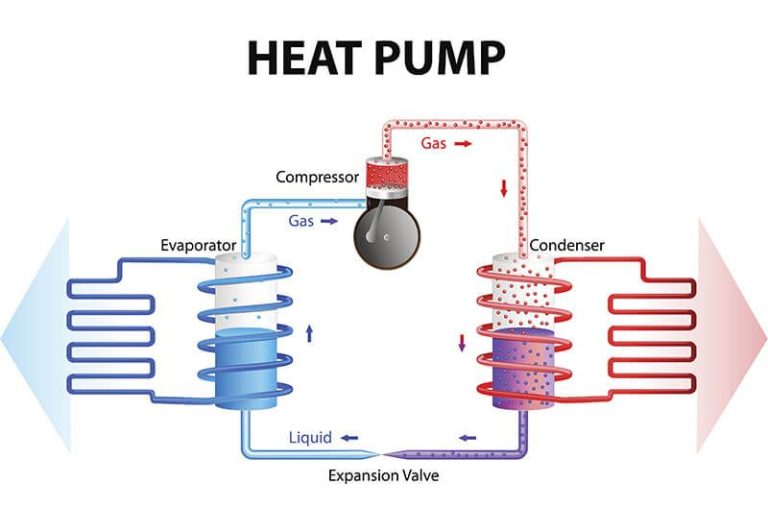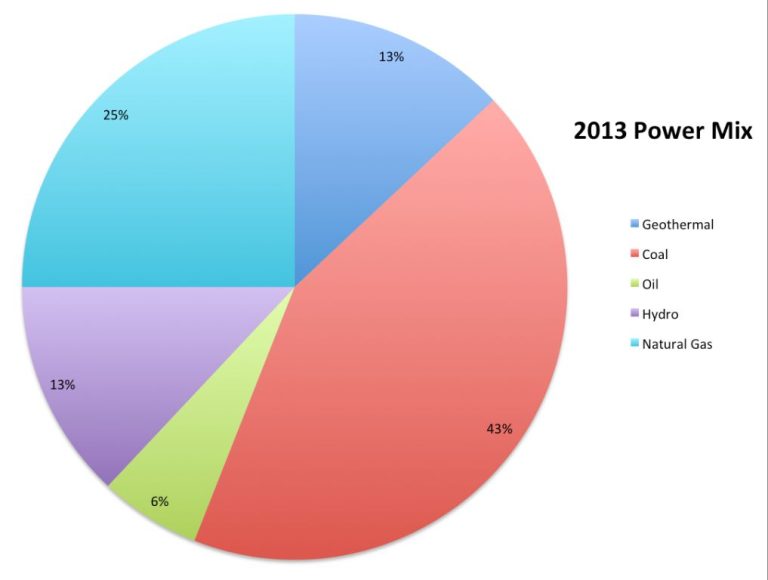What Is Geothermal Energy And Where Can We Find It?
What is Geothermal Energy?
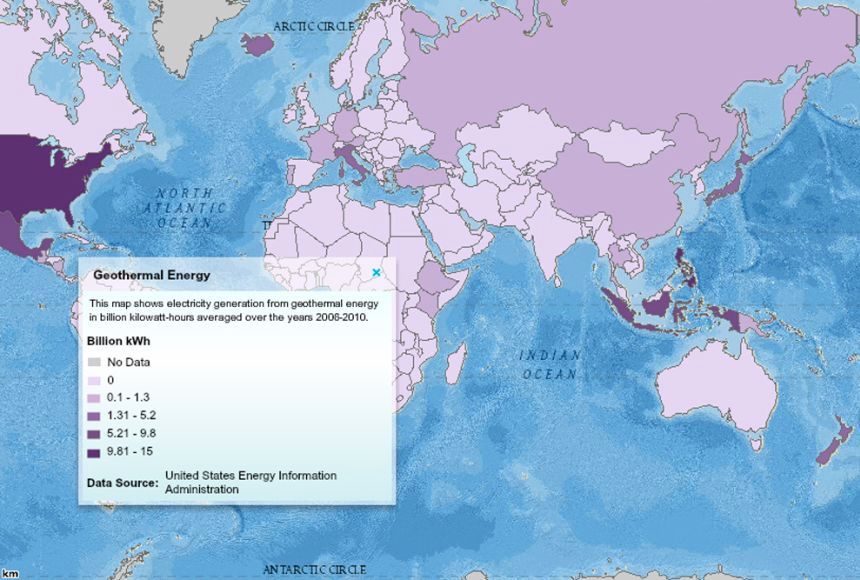
Geothermal energy is heat energy generated and stored in the Earth (Source). It is a renewable energy source that taps into the natural heat produced inside the earth’s core to generate electricity or provide direct heating and cooling (Source). The word “geothermal” comes from the Greek words geo (earth) and therme (heat).
Geothermal energy systems rely on the constant temperatures near the earth’s core to produce steam or heated water that can then be used directly for heating or to generate electricity. Typically, water is pumped down into hot rock reservoirs deep below the earth’s surface. The hot water or steam is then piped up through production wells to the surface where it can be utilized (Source). This makes geothermal energy a reliable and renewable baseload energy source.
Types of Geothermal Energy Systems
There are three main types of geothermal energy systems that are currently in use:
Hydrothermal Systems: This type utilizes naturally occurring hot water or steam reservoirs found deep beneath the earth’s surface. The steam and hot water can be brought to the surface and used to generate electricity or provide direct heating.[1]
Enhanced Geothermal Systems (EGS): Also known as engineered geothermal systems, this type pumps water underground into hot dry rocks to produce steam. The steam is brought back up through production wells and used to turn turbine generators.[2]
Geopressured Systems: These systems tap into hot brine under extreme pressure deep below the earth’s surface. The pressure contains a large amount of stored thermal energy, which can be converted into electricity.[1]
The type of geothermal system dictates the kind of power plant that can be built. Hydrothermal resources allow for dry steam, flash steam, or binary cycle plants. EGS resources require binary cycle or flash steam plants. Geopressured resources can utilize binary cycle technology.
Each system has different geographical requirements but all provide emission-free renewable energy when harnessed properly.
[1] https://www.energy.gov/eere/geothermal/electricity-generation
[2] https://www.energy.ca.gov/data-reports/energy-almanac/data-renewable-energy-markets-and-resources/types-geothermal-power
Benefits of Geothermal Energy
One of the biggest benefits of geothermal energy is that it is a renewable and sustainable energy source. Unlike fossil fuels which take millions of years to form and are in limited supply, the heat energy from the Earth’s core can theoretically be harnessed indefinitely. This makes geothermal a very attractive long-term energy solution.
Using geothermal energy also reduces our reliance on burning fossil fuels like coal, oil and natural gas. These fuels release greenhouse gases like carbon dioxide when combusted, contributing significantly to climate change. Geothermal energy has very low carbon emissions in comparison, making it a much cleaner energy source.
In addition, geothermal plants provide constant baseline power generation regardless of weather conditions since the Earth’s internal heat remains stable. This provides a reliable and consistent energy supply unlike variable renewable sources like solar and wind power. Overall, geothermal offers many environmental and sustainability benefits as part of our transition to a low carbon future.
Current Use of Geothermal Energy
Geothermal energy is currently used in over 80 countries around the world for electricity generation and direct heating applications. The countries generating the most electricity from geothermal sources are the United States, Indonesia, The Philippines, New Zealand, and Mexico.
In the United States, geothermal power plants generated about 17 billion kilowatt-hours (kWh) of electricity in 2021, which was 0.4% of total utility-scale electricity generation. The states generating the most geothermal electricity were California, Nevada, Utah, and Hawaii (Energy Information Administration, https://www.eia.gov/energyexplained/geothermal/use-of-geothermal-energy.php).
Direct use of geothermal energy, primarily for heating buildings, greenhouses, fish farms and spas, is estimated at 18.4 trillion BTU (0.6 quadrillion joules) per year. The countries using the most direct geothermal energy are China, Sweden, the United States, Turkey, and Japan (Energy Information Administration, https://www.eia.gov/energyexplained/geothermal/use-of-geothermal-energy.php).
In the U.S., geothermal heat pumps are used to heat and cool about 1 million homes and other buildings. The installed geothermal heating capacity is about 13.3 gigawatts thermal (GWth), providing 12.8 billion kWh of thermal energy in 2018 (Center for Sustainable Systems, https://css.umich.edu/publications/factsheets/energy/geothermal-energy-factsheet).
Geographical Locations
Geothermal energy sources can be found globally, though they are concentrated in certain regions of the world due to plate tectonics and volcanic activity. Many of the world’s most productive geothermal resources are located along major tectonic plate boundaries where volcanic activity occurs frequently. This includes the Pacific Ring of Fire, which stretches from South America to North America, along the west coasts of North and South America, across the Bering Strait, down through Japan and into Indonesia and New Zealand.
Other regions with significant geothermal resources include Iceland, which utilizes geothermal energy for heating and electricity generation more than any other country, as well as parts of Africa, the Mediterranean, and central and western Asia. In the United States, most geothermal power facilities are located in western states like California, Nevada, Utah, Idaho, and Oregon where geothermal resources are abundant.
On land, geothermal reservoirs require three key elements – heat, fluid, and permeability – to generate energy. Areas with recent volcanic activity, geysers, and hot springs indicate accessible geothermal resources. Offshore sites may also hold potential for geothermal development in the future.
Direct Use Applications
One of the most common direct uses of geothermal energy is for heating buildings. Geothermal heat pumps can tap into underground reservoirs of hot water to heat spaces efficiently and economically (NREL, 2004). Typical applications include heating and cooling systems for commercial, residential, industrial, and public facilities. The geothermal water can also be pumped directly into radiators or fan coils for heating (NREL, 2004).
Geothermal energy is commonly used in greenhouses to provide heat for plant growth during colder months. The hot water warms the air and soil, creating optimal growing conditions. Aquaculture, or fish farming, also uses geothermal heating for raising fish, shrimp, crayfish, and alligators (NREL, 2004).
On a larger scale, geothermal heating can be applied to entire districts through district heating systems. These systems distribute hot water from a centralized geothermal plant through a network of pipes to heat multiple buildings or neighborhoods (WBGD, 2016). District heating offers an efficient, low-emission solution for heating urban areas.
Overall, direct use applications take advantage of geothermal energy’s reliability, sustainability, and abundance to directly heat spaces and processes, rather than converting it into electricity.
Electricity Generation
Geothermal power plants draw hot water or steam from underground reservoirs and use it to drive turbines connected to electricity generators. There are three types of geothermal power plants used for electricity production:
- Dry steam plants use steam from a geothermal reservoir to directly drive turbine generators. The first geothermal power plant was built in 1904 in Tuscany, Italy to generate 250 kW of power. Steam technology is still used today at The Geysers in California, the world’s largest geothermal field which generates over 700 MW.
- Flash steam plants take high pressure hot water from deep inside geothermal reservoirs and convert it to steam to drive turbines. The largest geothermal facility in the world is the Hellisheiði Power Station in Iceland which generates 303 MW of electricity from flash steam.
- Binary cycle plants transfer the heat from geothermal fluids to another liquid which has a much lower boiling point. The secondary liquid flashes to vapor which drives the turbines. Binary cycle plants are closed loop systems and emit minimal greenhouse gases. The Ohaaki Power Station in New Zealand generates 112 MW from a binary cycle plant.
As of 2020, geothermal energy provided about 0.4% of total U.S. utility-scale electricity generation. With new technologies, the geothermal industry expects substantial growth in the coming decades (https://www.energy.gov/eere/geothermal/electricity-generation).
Technological Advances
New technologies are allowing for expanded use of geothermal energy beyond traditional hydrothermal resources. Enhanced geothermal systems (EGS) create reservoirs in hot dry rock through hydraulic fracturing, allowing geothermal power generation in areas without natural hydrothermal activity. This technology has the potential to dramatically increase viable geothermal locations. Hybrid systems that combine geothermal with solar PV or biomass sources can provide continuous baseload renewable power. Binary cycle power plants use geothermal fluids below 360°F to generate electricity, expanding the range of usable geothermal resources. Research is also underway on innovations like thermoelectric generators that convert heat directly into electricity without steam turbines.
NREL researchers note the United States has “vast untapped potential” for geothermal, particularly with next-generation technologies like EGS. Advanced closed-loop systems could provide up to 60% of U.S. baseload electricity by 2050. Organizations like the Department of Energy and ARPA-E are supporting development of enhanced geothermal and other innovative systems to realize the full promise of geothermal power.1
Environmental Impact
Geothermal power plants have relatively low emissions compared to fossil fuel power plants. According to the U.S. Energy Information Administration, geothermal plants emit on average 97% less acid rain-causing sulfur dioxide,
98% less smog-causing nitrogen oxides, and 99% less carbon dioxide than coal plants for the same amount of generated energy. The steam that geothermal plants extract from underground reservoirs does contain gases such as carbon dioxide, hydrogen sulfide, methane, ammonia, and boron, but these are usually reinjected back into the reservoir to avoid emission into the atmosphere. However, some hydrogen sulfide and methane can potentially be released.
While geothermal power does not produce smoke from combustion, the high visibility of geothermal power plant cooling towers can generate local opposition related to aesthetics. There are also concerns related to land subsidence and micro-earthquakes induced by extraction of large amounts of hot water from geothermal reservoirs. Careful reservoir management and extraction limits can reduce these risks.
Future Outlook
The future outlook for geothermal energy is promising, with projections for strong growth potential. According to a report from MIT, geothermal power could provide 10% of America’s electricity by 2050 with the proper investments in research and development to improve technologies. However, there are still barriers to wider adoption of geothermal, including high upfront costs and the geographical limitations for traditional hydrothermal resources. Government policy will play a key role in supporting geothermal and making it more economically viable through initiatives like tax credits, loan guarantees, and streamlined permitting. If these challenges can be overcome, geothermal is well-positioned to provide consistent, reliable baseload power to complement intermittent renewables like wind and solar.

